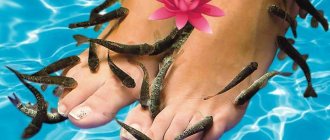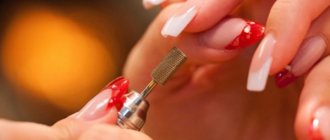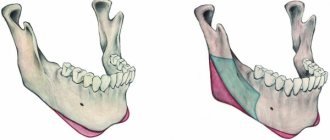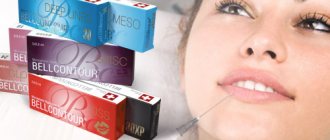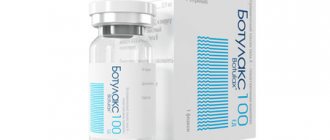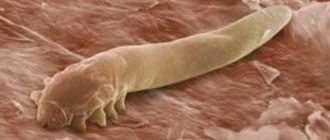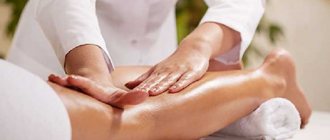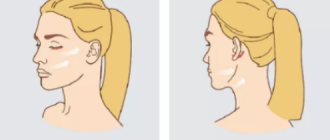Every woman wants to be happy and feel perfect in any situation. To do this, you need to take care of your health and care for your body every day. We must not forget about the feet: systematically performing a pedicure helps relieve fatigue and create an easy gait. Moreover, the procedure is available both at home and in specialized offices.
Pedicure is a set of practical measures for caring for nails and skin of the feet, including:
- removal of calluses, corns, keratinized skin;
- cleaning the nail plate;
- treatment of cracked heels;
- filing nails, giving them a beautiful shape;
- cuticle removal;
- correction of ingrown nails;
- lengthening of the nail bed;
- applying coating to nails;
- treatment of the soles of the feet using peeling, masks, baths;
- application of moisturizers and emollients;
- acupressure foot massage.
This type of care not only gives toenails a neat, aesthetic appearance, but also prevents the development of skin diseases and foot deformities. It needs to be done less often than a manicure - once every 2-3 months is enough.
Structure of toenails
The nail is located at the tip of the outer side of the finger, representing a shiny elastic plate of keratinized epidermis. It prevents damage to the finger from mechanical impact, thereby performing a protective function. The nail is a non-living tissue; it does not have nerve endings or blood vessels, which allows it to be removed painlessly.
The structure of the nail looks like this:
- The matrix is the basis for the formation of the plate, its “soil”. How thick and wide the nail will be, and how quickly it will grow, depends on the matrix.
- The nail bed is a layer of connective tissue covered with blood vessels on which the nail is formed. Due to the nerve endings, damage to the bed is very painful.
- The nail plate is the visible outer part of the nail.
- The cuticle is a skin roll that fits tightly to the base of the plate, protecting the matrix from dirt, dust, and harmful bacteria.
Toenails grow on average 3 times slower than fingernails. The nail plate is completely replaced with a new one in 4.5 months.
How to cut your toenails correctly
The toenails are quite thick, the skin on the plate is “pulled” tightly, so in order to trim them without negative consequences, you need to follow the algorithm:
- Prepare supplies in advance: nail scissors or clippers, nail file, towel, soap, bath with warm water. All instruments must be clean and disinfected.
- Place your feet in a container with water and dissolved soap and let them steam for 5-10 minutes (depending on the condition of the skin).
- Dry your feet with a towel.
- Trim the plates in an even line from edge to edge, without rounding the sides, otherwise the likelihood of ingrown nails increases. You cannot cut at the root; you need to leave an edge of about 1 mm.
- Trim the edges of the plate with a file and, if desired, treat your feet with moisturizer.
Classic pedicure
One of the most popular ways to take care of the health and beauty of your feet is a classic pedicure, also called a trim pedicure. It does not require the use of a special set of tools and is always done after thoroughly steaming the legs.
How to do a classic pedicure:
- feet are immersed in a bath of warm water, in which soap or salt have previously been dissolved (if there are no problems with the skin condition), citric acid (if the plates require whitening), salicylic acid (for more intense softening), herbal decoctions (to soothe the skin and speed up healing wounds and scratches);
- using a scraper, pumice stone, or a special file for grinding varying degrees of hardness, keratinized skin and corns are removed;
- The cuticles are cut using nippers, and the plates are given the desired shape.
Advantages of a classic pedicure:
- the price is lower than other varieties;
- the service is provided in any pedicure salon;
- Can be done at home;
- instant tidying up of the nail bed;
- Removing keratinization after steaming allows you to achieve the softest effect.
Disadvantages of classic pedicure:
- high probability of skin damage;
- the possibility of infection from a cut;
- short-term results, since after softening the cuticles and corns, regeneration processes are activated, forcing the cut areas to quickly recover;
- the master can cut off the excess, after which it will hurt to step on your foot.
Execution steps
The manipulation is carried out in a hospital or in a hardware cosmetology center, since the medical procedure involves the use of a special device with several attachments that clean the epidermis. The speed of work and selection of attachments is determined by the master; for this, he first examines the condition of the client’s feet and prescribes a course of treatment.
A gradual change of attachments promotes a gentle, comprehensive effect on the surface of the skin, which is why it is not damaged, but is gradually restored with each visit to the specialist.
Then the cosmetologist makes sure that there are no contraindications to the provision of the service, non-compliance with which may lead to side effects after work.
After this the pedicure begins:
- The work area is treated with an antiseptic to disinfect the surface.
- A moisturizing fatty lotion is applied, which helps to quickly soften the keratinized particles of the epithelium.
- After choosing a nozzle for the device, the doctor treats the entire surface of the foot and the area around the nails, removing old skin and polishing the epidermis.
- If there is an ingrowth on the nails, their angle is corrected, the side ridges are sanded and moved back. Additionally, a metal plate can be fixed, which is attached with medical glue, preventing re-ingrown nails.
- Irregularities on the surface (depressions, roughness, tubercles) are removed using a polishing attachment.
- A special serum is applied to the feet, which consolidates the effect of eliminating calluses and corns.
- If there is fungus, the master distributes an antibacterial solution over the nails, which increases the effectiveness of fighting the infection.
- The pedicure ends with the re-application of a caring lotion for moisturizing, which helps to consolidate the results of the technique. When applying it, the master performs a small foot massage, which improves blood circulation and metabolic rate in the toes.
As a standard, a decorative coating is not applied, but in some salons, at the girl’s request, a layer of fixative can be applied - a transparent varnish that does not contain chemicals. The manipulations usually take about an hour, and it is recommended to do them, like a classic decorative pedicure - once every 3-4 weeks.
Medical pedicure
This type of foot care is performed only by professional podiatrists who have undergone special training. The procedure is done after consultation with a doctor who has identified a dermatological or surgical problem: fungus, increased sweating, ingrown nails, warts, etc.
The essence of the procedure is that, using modern devices for removing dead skin, the doctor relieves the patient of the disease and puts his nails in order. The skin of the feet is softened with special lotions and creams; steam baths are not used. Depending on the lesion, not only the cuticle, but also the nail plate can be removed.
Step-by-step instructions:
- Foot treatment. Before starting the procedure, the doctor disinfects the feet with an antiseptic. This prevents the penetration of bacteria and also helps fight fungus.
- Softening by applying special products to the entire surface of the foot.
- Hardware removal of dead skin. The doctor selects the right attachment, removes dead cells, treating each finger and problem areas.
- Working on the nail plate. The podiatrist polishes the nails, processes the cuticles with a device, and, if necessary, shapes the nail bed with a file and other devices. Some diseases require partial or complete removal of the plate, which is then replaced by a temporary prosthesis.
- Applying masks and creams. To consolidate the result, the legs after the procedure are cleaned of epithelial remnants and covered with restorative agents. Sometimes antifungal varnish is applied to the nail plates.
Read more in the article: “Medical pedicure: indications and features”
Definition, indications
Medical pedicure is a medical procedure performed by a pedicurist with a medical education, aimed not at the aesthetic beauty of the feet, but at their health. The basis of the master’s work is the science of podology.
Podology is a branch of medicine that deals with the study of healthy and problematic feet, their treatment and the prevention of possible diseases. A podiatrist also has all the necessary skills to make a diagnosis, taking into account the results of laboratory and instrumental studies.
Medical pedicure is indicated for:
- An isolated case or systematic ingrowth of the nail plate;
- Core calluses affecting not only the upper, but also the deep layer of the epidermis;
- Onychomycosis;
- Hyperkeratosis;
- Deep, painful cracks;
- Warts on the sole;
- Nail deformation;
A specialist providing medical pedicure services must have a medical education, and the institution must have a license to carry out medical activities.
Features of medical pedicure
- Aimed not at masking the symptoms of the disease, but at treating it;
- The procedure is carried out using special attachments for the router, as well as a variety of staples, plates, threads and blades;
- During the pedicure process, affected areas of the nail or skin are removed without affecting healthy areas;
- Medical pedicure is 98% effective and reduces the likelihood of recurrence of the disease to zero.
Hardware pedicure
A pedicure done with the device allows you to consolidate the results for a long time. It belongs to the “dry” types of foot treatment, as it does not require preliminary steaming. The procedure is performed with a machine with a large number of attachments, cutters and caps. The master himself selects the right tool, based on the condition of the legs.
The essence of the procedure is to use a device with a nozzle rotating at a speed of up to 50 thousand revolutions per minute to painlessly rid the feet of rough skin. Cuticles are processed according to the same principle without previous softening.
Advantages of hardware pedicure:
- injuries and cuts are minimized;
- speed of implementation;
- elimination of problems that are not possible with the classical procedure;
- lasting effect up to 4 weeks.
Disadvantages of hardware pedicure:
- if the treatment is performed by an incompetent specialist, he can cause serious harm to the skin;
- relatively high price;
- an unpleasant burning sensation in people with sensitive skin and thin nail plates.
Read more in the article: “Hardware pedicure: how it’s done, pros and cons.”
European pedicure
Foot care according to the European method involves the use of the latest achievements in the field of cosmetology. The cuticles are treated with a composition that dissolves them within 10-15 minutes. Subsequently, they will no longer be so hard; the product helps soften them for a long period of time.
The essence of the procedure is that the master applies a special gel to the cuticles and corns to soften them. He then uses an orange pusher to push back the skin, revealing the nail bed. To process the feet, graters and grinders are used.
Advantages of European pedicure:
- speed of execution, since steaming is not necessary;
- maximum skin safety;
- Only the roughened epithelium is removed, the “living” skin remains intact.
Disadvantages of European pedicure:
- the use of low-quality cosmetics can lead to nail diseases;
- the effect does not last long, the cuticle quickly loses its well-groomed appearance;
- the soles of the feet are not as soft and smooth as after a classic pedicure.
Contraindications
Contraindications for medical pedicure:
- Pregnancy. Violation of the integrity of the skin, as well as the use of keratolytics, is undesirable during pregnancy;
- Hemophilia is a blood clotting disorder;
- Acute infectious diseases or relapse of chronic pathology.
Types of keratolytics used in pedicure: a complete guide for masters
Japanese pedicure
The Japanese way of caring for the skin of the feet is to use a variety of natural-based products at each stage of the procedure. Its essence can be seen in the following stages:
- Antiseptic treatment.
- Applying scrub, rubbing with pumice.
- Apply cucumber extract to the cuticles and massage each finger.
- Polishing the nail plate.
- Rubbing the vitamin solution into the nail.
- Treat each nail with wax and paraffin.
- Covering the skin of the fingers with scented oil.
- Massage the entire foot with a special silk bag with salt and herbs.
Advantages of Japanese pedicure:
- painless;
- the possibility of damaging the skin is minimized;
- The whole body relaxes, not just the feet.
Cons of Japanese pedicure:
- there are few craftsmen who master this technique;
- high price.
At home, Japanese pedicure socks, which are plastic bags filled with a treatment agent, are popular. They are easy to use: just put them on clean, dry feet and leave them on for about 1-2 hours. Then they need to be removed and the feet should be washed thoroughly. The effect becomes noticeable a week after the procedure.
Applying varnish
When applying varnish, it is convenient to use finger separators . This will protect you from accidentally getting varnish on an adjacent nail, especially if they were supposed to have different colors.
Before painting your nails, you need to degrease them with a product that does not contain acetone . A special base must be applied under the varnish. The varnish is applied in two layers with a special brush. The procedure is completed by applying a fixative.
SPA pedicure
A spa treatment involves relaxation of the whole body. Scented candles, incense, relaxing music - everything contributes to complete relaxation.
The essence of this pedicure is that dead cells are removed with soft scrubs, lotions, creams, and gels. Mechanical tools are not used. The applied products take a long time to be absorbed, you need to wait until they begin to act. After the SPA, masks with sea minerals are always applied to the feet.
Pros of SPA pedicure:
- the whole body relaxes;
- the risks of injuring the skin and causing infection are minimized;
- lasting effect.
Disadvantages of SPA pedicure:
- high price;
- the skin of the feet is rougher than after a trim pedicure.
Pedicure at home
At home, it is recommended to perform only classic trimming care, for which you will need:
- container for steaming legs;
- pedicure set with scissors, nippers, tongs, pusher, etc.;
- devices for treating feet (pumice stone, grater, etc.);
- nailfile;
- moisturizing cream;
- towel.
How to do a home pedicure
The procedure for performing a home pedicure consists of the following steps:
- Immerse your feet in a bath of warm water for 10-15 minutes.
- Dry your feet and use tweezers or scissors to shorten your nails.
- Use a pumice stone or a grater to remove keratinized epithelium on the feet, paying special attention to the heels and the skin between the toes.
- Trim the cuticle with nippers, using repeated gentle movements to move the remaining skin with a wooden spatula, opening the nail plate.
- File your nails and give them the desired shape (square will help avoid ingrown nails).
- Apply moisturizer.
- If desired, varnish.
Calluses and cracks
A large load on the feet, combined with improper care, leads to the formation of calluses, corns and cracks of varying depths on the feet. With minor manifestations, such problems can be dealt with at home. To do this, you need to take evening baths every day, adding restorative solutions to the water.
If the thickness of the dead epithelium is so great that pain appears when walking, then you cannot do without a visit to the pedicure salon. The specialist will assess the extent of the damage and suggest appropriate treatment.
Procedures supporting pedicure
After a visit to the salon or home care, you need to carry out maintenance procedures to maintain the effect. At least twice a week, feet should be moisturized with creams based on soothing herbs. Scrubs designed specifically for feet and containing apricot, almond, etc. kernels will be useful. Peeling with their help should also be done at least 2 times a week.
A good way to prevent keratinization of the skin of the feet is to wear comfortable shoes made of high-quality materials that prevent excessive sweating.
Foot treatment.
The foot is treated with a nozzle with a rubber base and replaceable caps of various diameters. The amount of abrasiveness of the caps depends on the condition of the feet.
The photo shows a base with a diameter of 13 mm with an abrasive cap 080 (large abrasive).
Possible options for abrasiveness of caps:
060 - super large,
080 - large,
150 - average,
240 or 320 - small.
Nozzle with a rubber base with a diameter of 5 mm with a cap of 080 coarse abrasiveness.
Very convenient attachment for pedicure! Base with a diameter of 11mm with interchangeable caps: 060-super-large, 080-large, 150-medium, 280-fine. The surface area processed in one pass is larger than that of a base with a diameter of 13 mm.
Carbide cutter with coarse, medium and fine cross-cut teeth.
Carbide cutter with very large
(blue ring),
large
(green ring), or
small
(red ring) cross
O
th by cutting teeth coated with titanium nitride. The finer the cut, the smoother the processed surface becomes.
Steel cutter with longitudinal perforated notches. Used when working with hyperkeratosis.
Carbide cutter, truncated cone with rounded end and coarse cross-cut. Effectively fights calluses.
Black ring
— extra-large cross-cut teeth.
Carbide cutter with special spiral cutting. The cutting features are designed for effective work on legs and skin.
Carbide pear-shaped cutter. Helps remove flaking. Recommended for diabetic feet. This nozzle can be used in two directions:
a) lift the flaky skin in one direction,
b) changing direction, gently cut.
Diamond cutter MonAlit (sintered diamond) - tornado gently grinds the skin without heating it. Ideal for working with diabetic feet and treating interdigital areas.
Bullet-shaped silicone carbide grinder to create a perfectly smooth surface. The color of the nozzle depends on the abrasiveness of the grain.
Pedicure tools
The procedure includes caring for the nails and skin of the feet, so to perform it you will need not only a pedicure kit, but also equipment for treating the feet.
Rules for choosing a tool
When choosing tools for a home pedicure, you need to pay attention to:
- material - metal objects must be made of stainless steel; if it is a file, then, on the contrary, it should not be made of metal;
- quality - you need to check the manufacturer: read reviews about it, study the official website;
- size – items should be compact and easy to use;
- sharpening - only sharp tools will help achieve the desired effect;
Varieties of basic pedicure tools
There is no strict classification of items for pedicure, but they are usually divided based on the purpose of use:
- to tidy up the nail plate;
- for processing cuticles;
- to remove roughened epithelium and polish the foot;
- to eliminate problems such as fungus, ingrown toenails, calluses, etc.
The main tools for foot care are:
- scissors - preferably with straight ends, since you need to cut in a straight line;
- nippers - used both for shortening the nail and for cutting cuticles;
- tongs – cut thick nails;
- files – different types are required: coarse-grained, grinders, buffs, polishers, etc.;
- pusher - helps to push back the cuticle;
- scraper – removes dead skin from the heels;
- pumice and graters also remove keratinized epithelium.
Pedicure is an important procedure that performs both aesthetic and therapeutic functions. If you have calluses, corns, ingrown toenails or foot problems, it is better to consult a specialist.
Removing corns.
This cutter is recommended only for experienced craftsmen!
A hollow cutter with a sharp edge is designed to loosen corns. To do this, a “notch” is performed.
The reversible carbide cutter with cross cutting easily removes loose callus.
The stainless steel cutter also easily removes loose callus.
Removal of core calluses.
The carbide nozzle removes the keratinized layer of corns, opening access to the core of the callus.
A hollow cutter processes the core callus.
Using a perforated spherical bur, we drill out the callus.
Using a bud-shaped diamond cutter, we grind the edges of the callus.
Diamond cutter grit:
large
- green ring,
average
- blue ring.
